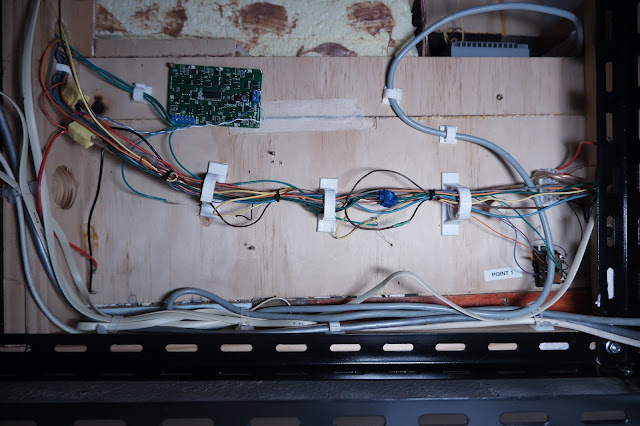Winter has gone and spring has arrived. With the abundant colours of Spring, our neighbour blooms with Jacaranda trees at this time each year. For my layout, I want to have some jacaranda trees planted so I search around looking for colour foilage, to bring this part of the layout to life.

Above: Completed Jacaranda trees with completed Terrace houses.

Above: One of the many large Jacaranda trees blooming in the my nearby suburb taken on 22 November 2020
Bring the area to life.One of challenges and time absorbing aspects of modelling a suburban or rural setting is the effort and time in bring the area to life. Below is the corner area that has been dormant for over year without any scenery. I needed to fill these areas in which would look appropriate but also with the items I had on hand.
 |
Above: corner area that is to be detailed with scenery.
|
The Terrace HouseAs my layout is based in the inner western suburbs of Sydney, it would be appropriate to have at least a row of late 1800s terrace houses. However, by the 1950s, terraced houses were very much working class houses and very run down, unlike today where these houses are now sought after and craftily restored or renovated. The basis of my house is an LJ cardboard Terraced house. These kits are no longer available. However, as these card kits can be quite flimsy if made as is, I replaced the cardboard roof with model corrugated iron and reinforced the walls and floor with balsa wood. I also gave each house a separate distinct character to reflect the standard of living for each occupant.
Making Jacaranda TreesI previously made gum trees using old electrical power cord and no more gaps. I use light green foilage for the leaves. Instead of making new trees for Jacarandas, I was able to find purple foilage at the Epping Model Railway Buy and Swap Meet last November (2019).
It was simply a matter of ripping of the green foilage and dipping the branches in white glue and dipping the trees in the zip-lock bag containing the purple foilage.
Voila and the Jacaranda trees are present.






























